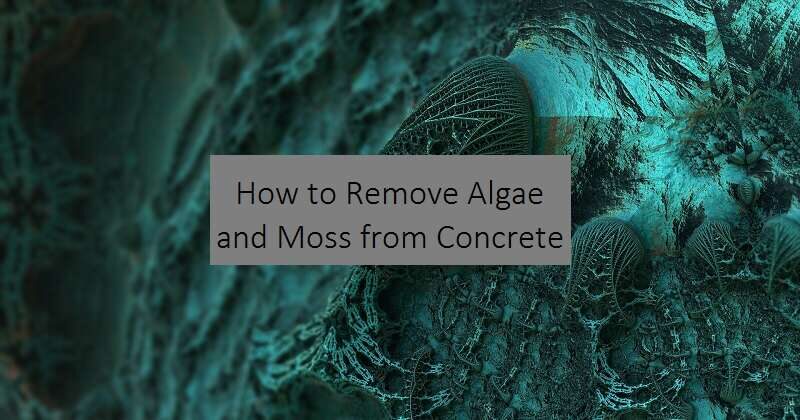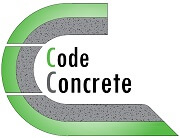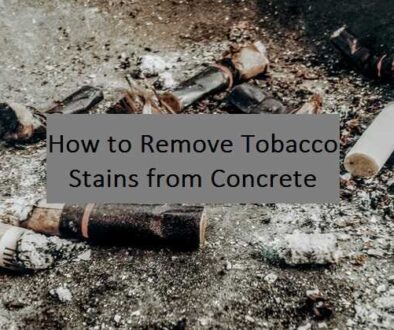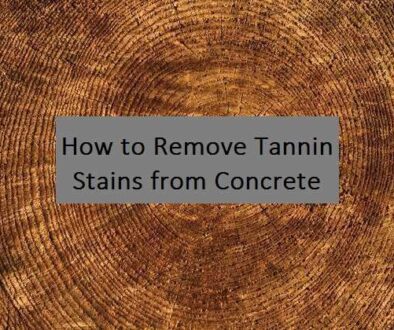How to Remove Algae and Moss from Concrete

Last updated on November 10th, 2022
Algae and moss can grow on concrete floors, brick walls, and pavers. This not only can be aesthetically unappealing, but can also lead to slippery surfaces, hard to walk on walkways or pathways, and can promote moisture issues. Thereby, it is sometimes necessary to remove algae and moss from concrete surfaces.
In this article, we will provide the best methods on how to remove algae and moss from concrete, with a step by step procedure. Besides, it is important to mention that there are generally various methods for the removal of moss and algae, however some can stain concrete (such as copper sulfate) or involve the use of highly toxic materials (such as formaldehyde solution). Accordingly, we will not address these methods in this article.
However, before getting into the removal process, let us first briefly explain some important details about mold and algae.

What are moss and algae?
Moss is a non-flowering green plant that does not have roots. It mainly grows on moist surfaces, and reproduces through spores. Whereas, algae is a photosynthetic group of organisms that contain chlorophyll, and like moss, is non-flowering and does not have roots. However, algae and moss can look somewhat similar from a distance, especially for people who do not know much about them. But actually they are two different species.
Basically, moss is a thread like growth that is somehow spongy and springy to touch. Whereas, algae looks wet and slimy, and represents a cluster of cells.
The favorable environmental conditions for moss and algae
In general, moss favors hard surfaces which are moist, and are located in an area of shade with poor air movement. These include trees, compacted soil, and even concrete and brick. Algae favors a somewhat similar environment, especially highly wet surfaces or even water, but does not favor shade as much as moss. Some of the common locations where algae grows include water paths and ponds.
How to remove algae and moss from concrete: The best methods
Method #1: Bleach

This method is highly effective for the removal algae and moss from concrete, and only requires readily available household products.
Things you will need
- Water.
- Safety gear.
- Chlorine bleach.
- Stiff bristle broom.
- Pressure washer – optional.
Notes
- Chlorine bleach is a liquid that consists of sodium hypochlorite, water, and other chemicals.
Appearance: Colorless or slightly yellowish.
Availability: It is available at the supermarkets and cleaning supply stores.
Hazards: This product is corrosive to flesh, and can react with other chemicals to produce a toxic gas.
Steps
- Put on your safety gear.
- Wet the surface with clean water, or pressure wash it.
- Apply chlorine bleach to the moss or algae.
- Let the bleach take its course for about 10 minutes.
- Rinse the surface with clean water.
- After few hours, use a stiff bristle broom and water to scrub off the dead moss or algae.
- Rinse and flush the surface with clean water, or pressure wash it.
- Repeat as needed.
Explanation
Start by putting on your safety gear. Then, wet the surface or pressure wash it if the equipment is available. Then, apply chlorine bleach to thoroughly saturate the moss or algae. Let stand for about 10 minutes. Next, rinse the surface with clean water. Then, after few hours, use a stiff bristle broom and water to scrape off the dead algae or moss. And finally, rinse and flush the surface with clean water. You can repeat the process as needed.
Method #2: How to remove algae and moss from concrete with boiling water

This is also an easy solution to remove algae and moss from concrete, which involves the use of boiling water. Although this solution sounds simple, it is actually highly effective, inexpensive, and relatively safe.
Things you will need
- Safety gear.
- Boiling water.
- Stiff bristle broom.
- Watering can.
- Clean water.
Steps
- Wear your safety gear.
- Apply boiling water right on the moss or algae using a watering can.
- After a few days, scrub the surface with a stiff bristle broom to remove the residue.
- Rinse and flush the surface thoroughly with clean water.
Explanation
First, put on your safety gear, mainly to avoid burns from hot water or splashes. Then, use a watering can (which is resistant to hot water) to apply hot water to the moss or algae. After few days, use a stiff bristle broom to scrub off the remains. Finally, rinse the surface with clean water. You can repeat this process as needed.
Method #3: How to remove algae and moss from concrete using special products

This solution involves the use of special products which are designed to kill moss and algae. However, since we are dealing with this issue on concrete surfaces, it is important to look for products which do not stain concrete.
Things you will need
- Follow the manufacturer’s instructions.
Explanation
Using special algae and moss removal products is an effective solution. Mainly, such products can vary from being biodegradable and safe for the surrounding plants and animals, to being more toxic, corrosive, and staining. Thereby, it is crucial to select the adequate product depending on the requirements and surrounding.
Frequently asked questions
Does vinegar kill algae and moss?
Yes, vinegar is highly effective for the removal of algae and moss. However, it can be “harsh” on the concrete surface due to its acidity. Thereby, it is preferable to use alternative solutions which are less harsh.
How to permanently remove and prevent moss?
Removal methods do not generally provide a permanent solution. In fact, the best approach is to deprive the favorable environmental conditions which promote the growth of moss to ensure a long lasting solution. For example, you can reduce the continuous moisture if possible, or improve the exposure to sunlight. In addition, sealing concrete surfaces can be highly effective.




